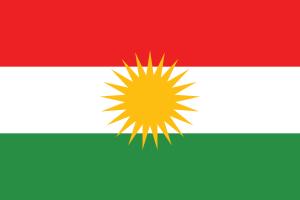Language/Northern-kurdish/Grammar/Dative-Case
| ◀️ Genitive Case — Previous Lesson | Next Lesson — Days of the Week ▶️ |
Introduction[edit | edit source]
In this lesson, we will delve into the dative case in Northern Kurdish noun and adjective declension. The dative case is used to indicate the indirect object of a sentence, typically the recipient or beneficiary of an action. Understanding the dative case is crucial for constructing grammatically correct sentences and expressing relationships between different elements in Northern Kurdish. Throughout this lesson, we will explore the rules and patterns associated with the dative case, and provide numerous examples to illustrate each point.
Dative Case Declension[edit | edit source]
The dative case in Northern Kurdish is used to indicate the recipient or beneficiary of an action. It is typically marked by a suffix attached to the noun or adjective. The suffix varies depending on the gender and number of the noun or adjective. Let's explore the declension of nouns and adjectives in the dative case.
Noun Declension[edit | edit source]
In the dative case, the endings of nouns change according to their gender and number. Here is a table illustrating the noun declension in the dative case:
| Northern Kurdish | Pronunciation | English |
|---|---|---|
| mêr (boy) | mêrê | to the boy |
| keça (girl) | keçê | to the girl |
| mal (house) | malê | to the house |
| warî (river) | warîyê | to the river |
From the examples above, we can observe that the dative case suffix for masculine nouns is "-ê," while the dative case suffix for feminine nouns is "-a."
Adjective Declension[edit | edit source]
Adjectives in the dative case also undergo declension based on the gender and number of the noun they modify. The following table demonstrates the adjective declension in the dative case:
| Northern Kurdish | Pronunciation | English |
|---|---|---|
| nû (new) | nûyê | to the new |
| baş (good) | başê | to the good |
| biçûk (small) | biçûkê | to the small |
| pir (many) | pirê | to the many |
From the examples above, we can see that the dative case suffix for adjectives is "-ê" for both masculine and feminine nouns.
Cultural Insights[edit | edit source]
The usage of the dative case in Northern Kurdish reflects the cultural values and traditions of the Kurdish people. It allows speakers to express their relationships with others and highlight the importance of recipients or beneficiaries in various contexts. For example, when expressing gratitude or acknowledging someone's help, the dative case is used to emphasize the recipient of the action. Understanding the dative case not only enhances language proficiency but also provides insights into the social dynamics and cultural nuances of Northern Kurdish-speaking communities.
Practice Exercises[edit | edit source]
Now, let's practice applying what we have learned about the dative case in Northern Kurdish noun and adjective declension. Choose the correct form of the noun or adjective in the dative case to complete each sentence.
1. Mêr (boy) --> Mêr... (to the boy) 2. Keça (girl) --> Keç... (to the girl) 3. Mal (house) --> Mal... (to the house) 4. Warî (river) --> Warî... (to the river) 5. Nû (new) --> Nû... (to the new) 6. Baş (good) --> Baş... (to the good) 7. Biçûk (small) --> Biçûk... (to the small) 8. Pir (many) --> Pir... (to the many)
Solution: 1. Mêr (boy) --> Mêrê 2. Keça (girl) --> Keçê 3. Mal (house) --> Malê 4. Warî (river) --> Warîyê 5. Nû (new) --> Nûyê 6. Baş (good) --> Başê 7. Biçûk (small) --> Biçûkê 8. Pir (many) --> Pirê
Explanation: In Northern Kurdish, the dative case suffix for masculine nouns is "-ê," while the dative case suffix for feminine nouns is "-a." Adjectives in the dative case have the suffix "-ê" for both masculine and feminine nouns.
Conclusion[edit | edit source]
Congratulations! You have successfully learned about the dative case in Northern Kurdish noun and adjective declension. The dative case plays a crucial role in expressing relationships between different elements in sentences and highlighting the recipients or beneficiaries of actions. By understanding the declension patterns and rules associated with the dative case, you have taken another step towards mastering Northern Kurdish grammar. Keep practicing and exploring the rich cultural heritage embedded in the language.
Other Lessons[edit | edit source]
- Subordinating Conjunctions
- Place Adverbs
- Future Tense
- Give your Opinion
- How to Use Have
- Personal Pronouns
- Conditional Mood
- Manner Adverbs
- Interrogative Pronouns
- Questions
Template:Northern-kurdish-Page-Bottom
| ◀️ Genitive Case — Previous Lesson | Next Lesson — Days of the Week ▶️ |

